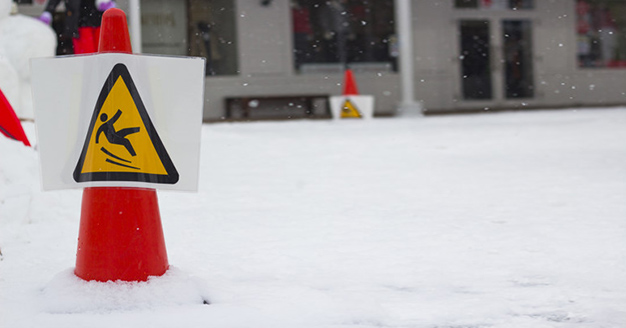Documenting Winter Weather Related Events
Boom!
Out of nowhere came the first winter storm of the 2018-2019 season, hitting the Northeast and affecting several of our billing company offices this week.
So, while the white stuff is tops in our minds, it’s time to loop back to our annual discussion surrounding how to adequately document winter emergencies in your Patient Care Report (PCR) to help your billing office recover reimbursement for those incidents.

In the billing office…
When the PCR you prepare following the run moves to the billing office, the staff there will read the written narrative and review all of the data elements to properly apply two code types – diagnosis or ICD-10 codes and HCPCS or procedure codes.
ICD-10 codes (the International Classification of Diseases version 10) are used to communicate the nature of the illness or injury. These codes are organized by several criteria including anatomical location, injury categories, mechanism, illness/injury type all accounting for your patient’s body systems that were impacted by the run situation that you were activated for in the first place.
HCPCS codes (Healthcare Common Procedure Coding System) describe the type and number of service units employed on your run (Base Rate- ALS/BLS, Ground/Air, Miles.)
You are dispatched…
You are dispatched to a fall victim located in the parking lot of a neighborhood church. The dispatcher relays that your patient is an elderly male patient who has fallen and has a possible leg fracture. Like yesterday, here on the east coast, your coverage area is stuck in the middle of a heavy snow storm.
All ground surfaces are covered with a dangerous layer of snow and ice.
You arrive on the scene to find your patient lying on the ground a few feet from his car. He tells you that he exited his car and was walking from the parking lot to the church building when he slipped and fell, leaving his left leg underneath the weight of his body post fall.
It’s Documentation Time!
Now that your patient is in the care of the ED staff, you return to base and begin finalizing your PCR documentation.
Obviously, the primary focus of your PCR documentation will be centered on the injury and your patient’s overall condition. But, don’t forget to document the events that lead to your patient’s current situation and the surroundings to describe the mechanism and causation of the injury.
Example
Your written narrative will most likely look something like…
Dispatched BLS (insert priority if used) via First County 9-1-1 for a male fall victim in the parking lot of City Church, possible leg fracture. Medic Five responded upon dispatch and arrived to find a male patient lying in a parking lot. Parking lot surface was covered with snow and ice and patient’s clothes were wet. Patient stated he was walking from his car to the church building and slipped and fell on the icy/snowy pavement. Patient presented CAOx4 initially with negative LOC. His left leg was angulated beneath the weight of his body in a semi-seated position. The patient was found to have considerable stabbing pain which he rated as a “10” on the severity scale. The pain is distal to the knee with the area presenting slightly asymmetrical and angulated when compared to the right lower extremity which appeared normal and not injured. There was notable swelling and bruising to the affected area most likely indicating a potential fracture. Pedal pulses were present upon assessment and skin color of the affected extremity was normal skin tone. Affected extremity was splinted. C-collar applied and patient moved using a scoop stretcher to load to ambulance stretcher. Vital signs assessed as noted with normal values. Patient transported to Community Hospital ED.
Review
Notice with just a few written narrative lines, we were able to adequately pinpoint the exact area of the injury, the suspected anatomical location, the pain level complete with numeric qualification and used a quality description of the patient in the patient’s own words.
Additionally, we were able to include a short description of the events leading to the cause of the fall and the resulting injury which will aid the billing office to decide the payer source. In this case, it appears that the church’s liability insurance may be responsible to cover the cost of the transport given that the untreated, unplowed icy parking lot condition most likely contributed to this scenario.
Final Thoughts
We close with this observation. Sans the level of specificity in describing the full scenario- contributing factors, nature of injury and resulting survey, assessment and treatment involved, your billing office will be unable to choose the proper codes to apply to this claim.
Winter ushers in a plethora of potential emergency scenarios, from falls to exposure incidents to motor vehicle accidents, plus medical emergencies exacerbated by the challenges of winter in those areas hardest and most traditionally hit by weather extremes.
Be prepared! Practice your best documentation techniques each and every time. The result will be a healthy revenue stream realized from efficient and accurate billing thanks to high-level PCR documentation.